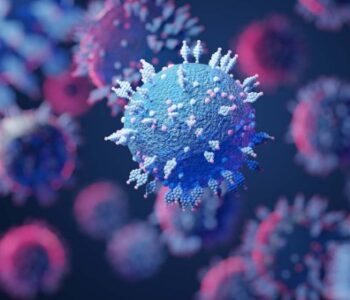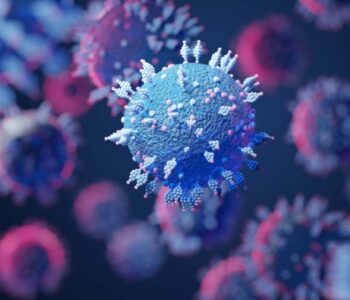 Covid 19 Pandemic
Covid 19 Pandemic
Long COVID Conditions – Fatigue 02
Section 2
SLEEP AND CIRCADIAN RHYTHMS
Sleep and circadian rhythm abnormalities seem to have a bidirectional link with autoimmune illness. Chronic sleeplessness is linked to a higher risk of acquiring an autoimmune illness . Narcolepsy, a sleep condition, may possibly have an immunological component, according to evidence. Sleep disturbances are common in people with autoimmune diseases. Sleep apnea is more common in people with rheumatoid arthritis, ankylosing spondylitis, systemic lupus erythematosus, Sjörgen’s syndrome, pemphigus, and systemic sclerosis. Rapid-eye movement (REM) sleep behavior disorder is more common in people with multiple sclerosis.

Autoimmune illnesses such as multiple sclerosis, psoriasis, and rheumatoid arthritis are linked to an increased incidence of restless legs syndrome. Non-restorative sleep is also used in the clinical diagnosis of chronic fatigue syndrome/myalgic encephalomyelitis, implying a link between poor sleep and exhaustion. In addition, sleep may be affected by the secondary effects of autoimmune illness or sleep disorder pathology.
Individuals with autoimmune illness, for example, suffer from persistent discomfort. Sleep disturbances are reported by up to 88 percent of those with chronic pain. Conversely, it has been found that up to 50% of those who have insomnia also have increased pain which might lead to exhaustion. Sleepiness is described as the inability to stay awake or the increased incidence or urge to sleep. Sleep disturbances and sleep disorders are linked to drowsiness.
In addition to causing exhaustion, sleepiness may affect alertness, cognition, mood, and concentration. Many sleep disorders, such as insomnia and sleep apnea, are linked to problems with alertness, cognition, mood, motivation, and attention. Sleepiness may be caused by staying up for long periods of time or by the fragmented sleep that many health disorders, such as sleep apnea and autoimmune illnesses, cause on a regular basis.
Evidence shows that sleep loss has a dose-dependent effect, with more sleep loss correlated with increased tiredness and lower performance. Nonetheless, drowsiness varies with time of day, which might affect an individual’s capacity to sleep or the usefulness of naps in avoiding sleepiness-related impairments in functional activities like cognition. Individuals who suffer from tiredness often go through phases when their exhaustion is at its worst. Furthermore, some people with multiple sclerosis are more fatigued in the morning, while others are more fatigued in the evening.

Prior sleep or circadian variables are probable contributors to these time-of-day changes, albeit this is speculation. Increased amounts of inflammatory chemicals have been linked to sleep problems such as sleep apnea, insomnia, and REM sleep behavior disorder. Because inflammation may cause tiredness, it’s possible that neuroinflammation associated with disrupted sleep or sleep loss might increase fatigue in autoimmune disease patients.
Dysregulated homeostatic cytokine expression in autoimmune illness leads to sleep abnormalities in autoimmune disease patients. Furthermore, it’s possible that sleep deprivation, which raises pro-inflammatory cytokines, exacerbates sleep problems in those with autoimmune diseases.
STRESS
The hypothalamic-pituitary-adrenal (HPA) axis is involved in hormonal responses to stress that control exhaustion. It includes interactions between the hypothalamus and pituitary glands. When compared to the normal population, those with autoimmune diseases are said to have higher stress levels. Stress seems to be able to control brain inflammation in autoimmune illnesses like multiple sclerosis. When the sympathetic nervous system is activated, noradrenaline is released from nerve terminals and adrenaline is released from the adrenal medulla. These catecholamines may raise blood pressure and heart rate.
Adrenaline receptors are expressed by microglia, macrophages, and astrocytes in the central nervous system. Complement-induced innate immunological responses change adrenaline receptors. Several autoimmune and related illnesses, including Sjögren’s syndrome, rheumatoid arthritis, and systemic lupus erythematosus, have been linked to dysregulated complement. Noradrenaline seems to suppress activated microglia in a selective manner.

Furthermore, when noradrenaline is combined with ATP, it reduces the baseline rate while increasing ATP-induced process extension and migration of microglia in vitro, suggesting that purinergic and adrenergic activation have a link. Beta-adrenergic receptors also have an anti-inflammatory effect on astrocytes, lowering the expression of TNF-related genes such as IL-6, CXCL2, CXCL3, VCAM1, and ICAM1. Stress causes the production of corticotrophin-releasing hormone (CRH) in the hypothalamus. CRH stimulates the pituitary to generate adrenocorticotropic hormone (ACTH), which boosts the production of glucocorticoids from the adrenal cortex. Anti-inflammatory properties of glucocorticoids are achieved in part through suppressing IL-1, IL-6, and IFN-, as well as cyclooxygenases and prostaglandins.
However, cytokines and ACTH and glucocorticoids have a connection in which IL-1, IL-6, and TNF-can activate the pituitary adrenal axis to raise blood levels of ACTH and glucocorticoids inhibiting pro-inflammatory molecules. Glucocorticoids, on the other hand, may have a pro-inflammatory effect on the immune system. Sleep deprivation may also raise cortisol levels, a glucocorticoid. As a result, the consequences of stress, sleep, and exhaustion are all intertwined. Chronic stress, such as that experienced by people with chronic illnesses, may lower glucocorticoid sensitivity, promoting inflammatory signaling. DHEA has the ability to operate as both a positive and negative allosteric modulator of the NMDA and GABA A receptors. In autoimmune diseases such as multiple sclerosis, systemic lupus erythematosus, rheumatoid arthritis, and inflammatory bowel disease, DHEA levels are reported to be lower. Anxiety, sadness, sleep, and exhaustion are all affected by serotonin.
Serotonin, dopamine, and noradrenaline are all released in response to IL-1. Noradrenaline is an excitatory neurotransmitter that binds to alpha- and beta-adrenergic receptors. are linked to noradrenaline. Low levels of noradrenaline are linked to anxiety, depression, exhaustion, and a lack of drive. Neurons that produce noradrenaline are present in limited parts of the brain. Noradrenaline levels stay relatively stable throughout wakefulness but are increased when a stimulus is required such as wakefulness, attention.
Dopamine is an excitatory neurotransmitter. Motivation, interest, and drive are all affected by dopamine. Low levels of dopamine are seen in those who have trouble finishing activities, have poor attention, have little energy, and are unmotivated. As a result, dopamine imbalance leads to exhaustion, with insufficient dopamine causing fatigue.
Histamine is an excitatory neurotransmitter that binds to four G protein-coupled receptors: histamine 1, histamine 2, histamine 3, and histamine 4. Sleep/wake cycles, emotions, behavior, and exhaustion are all affected by histamine. Microglia are known to be activated by histamine, resulting in the production of pro-inflammatory cytokines such as IL-6 and TNF- alpha. In chronic inflammatory disorders, including autoimmune diseases like multiple sclerosis, histamine is also activated.

Histamine causes vasodilation and may cause blood pressure changes. Histamine may also cause the release of nitric oxide, a powerful vasodilator. Histaminergic neurons may be found in all parts of the brain, including the cortex and the brainstem. Histaminergic receptors, on the other hand, are located on cells throughout the brain. When you’re awake, neurons fire fast, and when you’re sleeping, they don’t. Drowsiness is caused by medicines that target the histamine 1 receptor, and over-the-counter antihistamines are linked to increased sleepiness
Glutamate is a primary excitatory neurotransmitter generated by metabolism and present throughout the Central Nervous System. Glutamate binds N-methyl-D-aspartate (NMDA) receptors, which increase calcium membrane permeability. Low glutamate levels may cause fatigue and impaired brain function. To protect neurons from excitotoxicity, extracellular glutamate concentrations function within a narrow physiological range involving its release and absorption. Ketamine is a strong NMDA receptor antagonist with anti-fatigue properties, according to current studies.
Acetylcholine is an excitatory neurotransmitter made from choline and acetyl-CoA by the enzyme choline acetyltransferase. Acetylcholinesterase is an enzyme that breaks down acetylcholine to acetate and choline. Acetylcholine binds to both nicotinic and muscarinic acetylcholine receptors in the brain.
Acetylcholine is involved in both central and peripheral nervous system (CNS) and peripheral nervous system (PNS) functions, including the neuromuscular junction. Sleep and wakefulness, arousal, cognition, memory, and tiredness are all regulated by acetylcholine.





